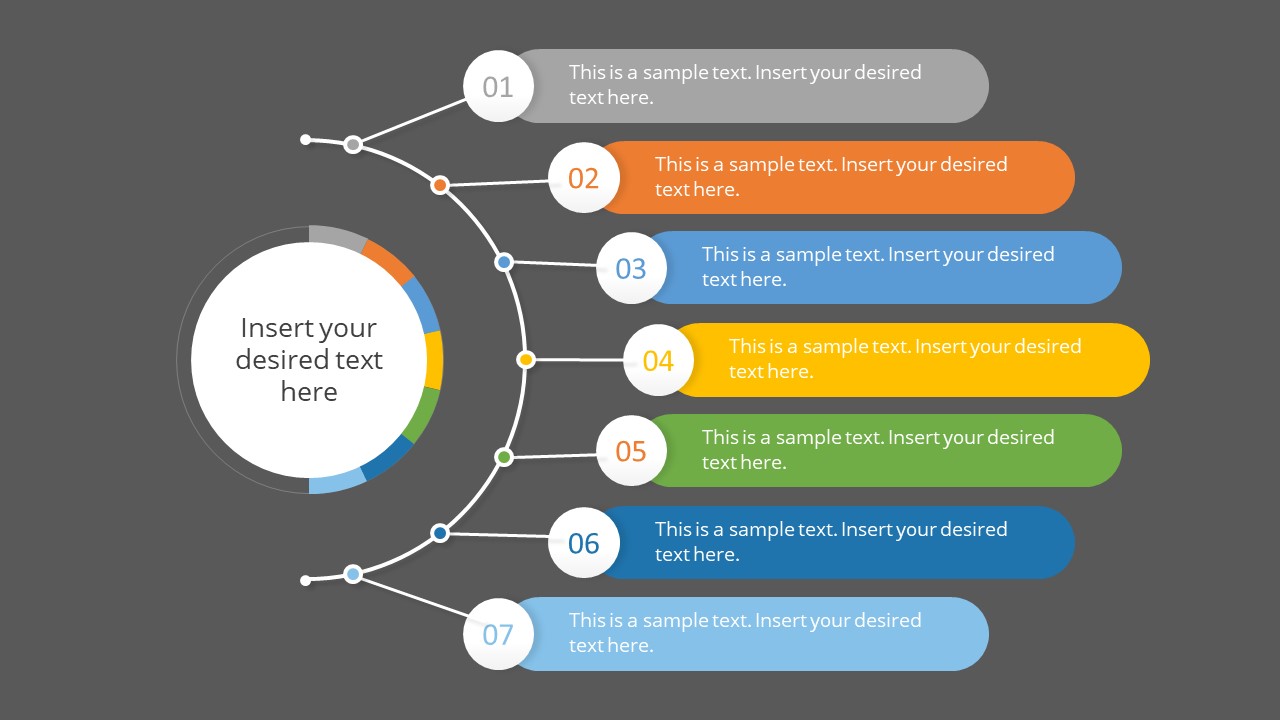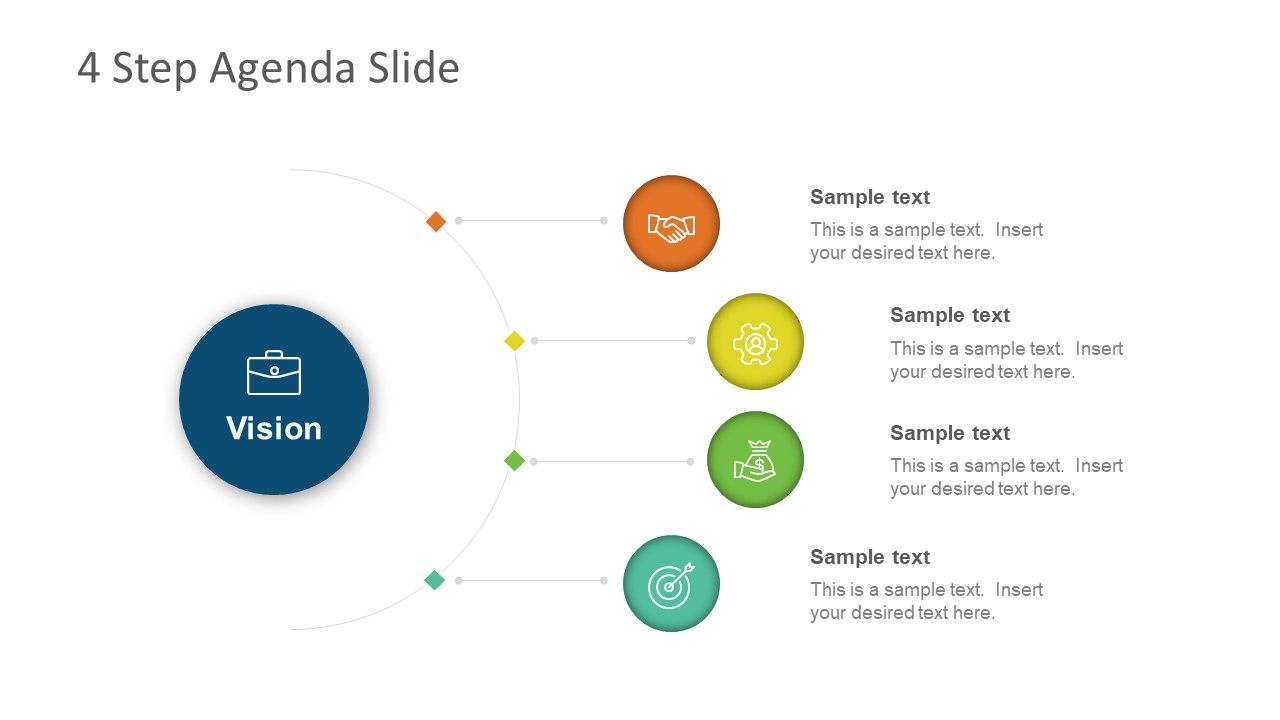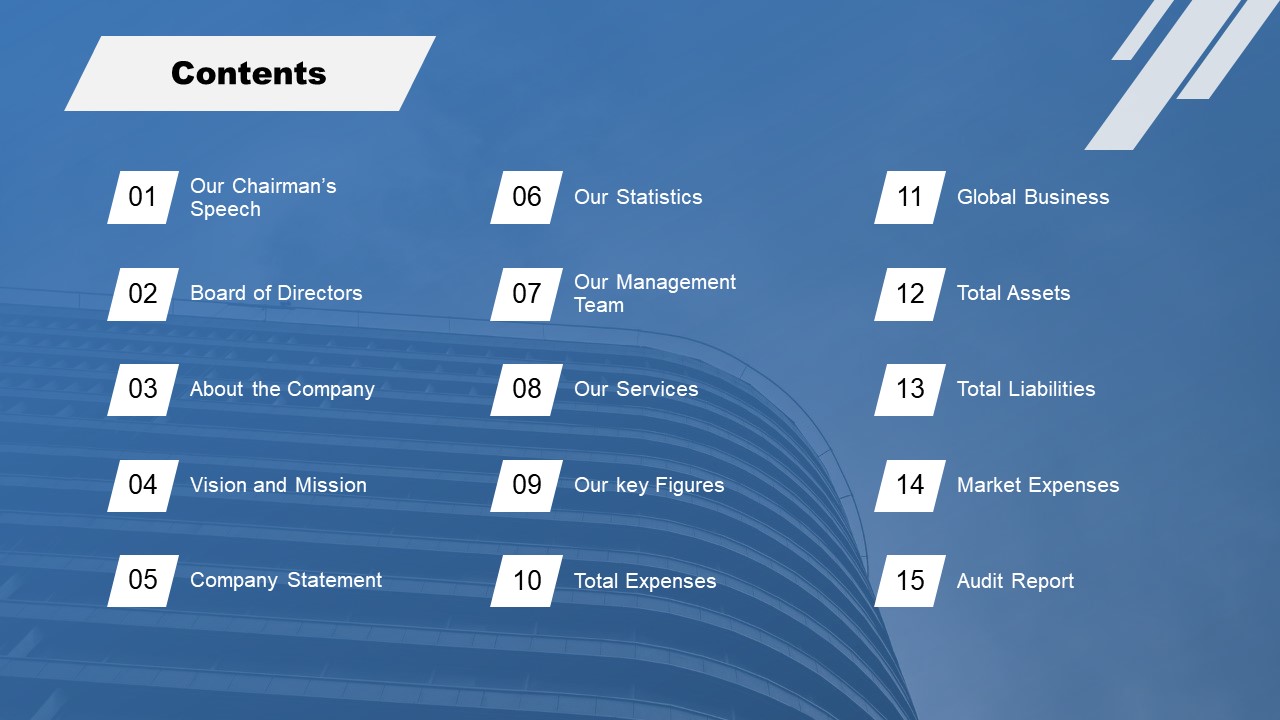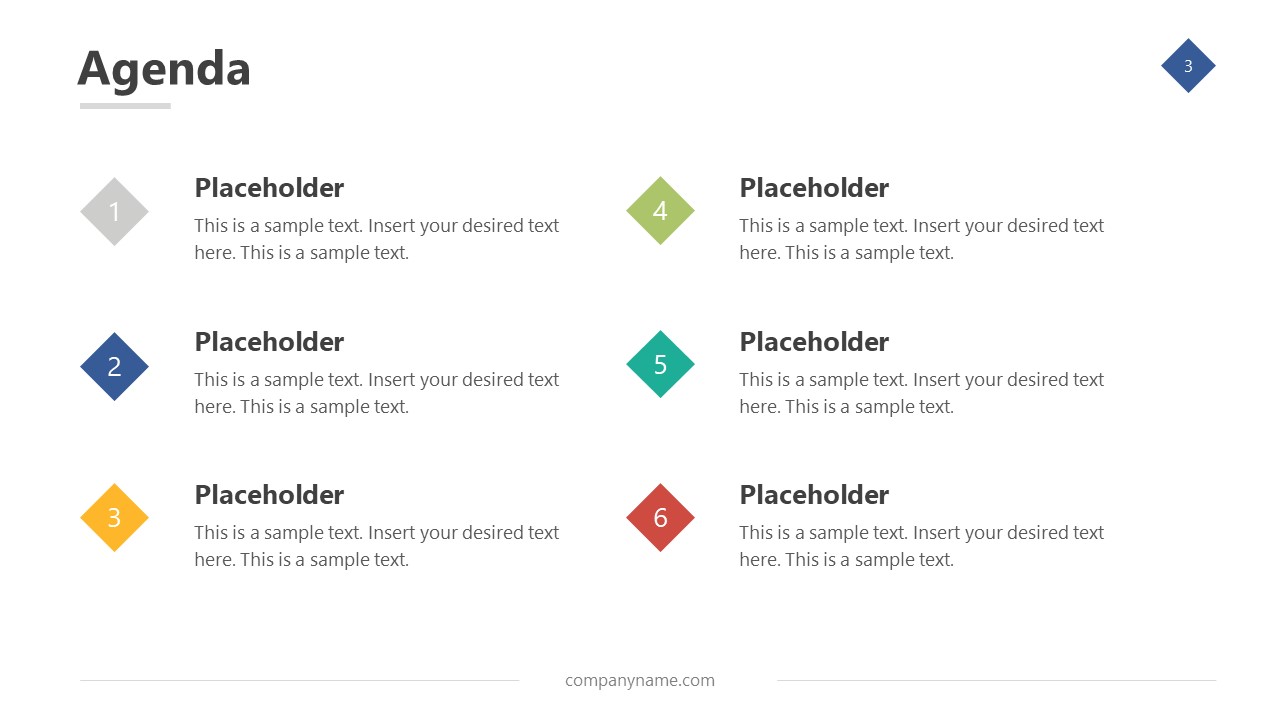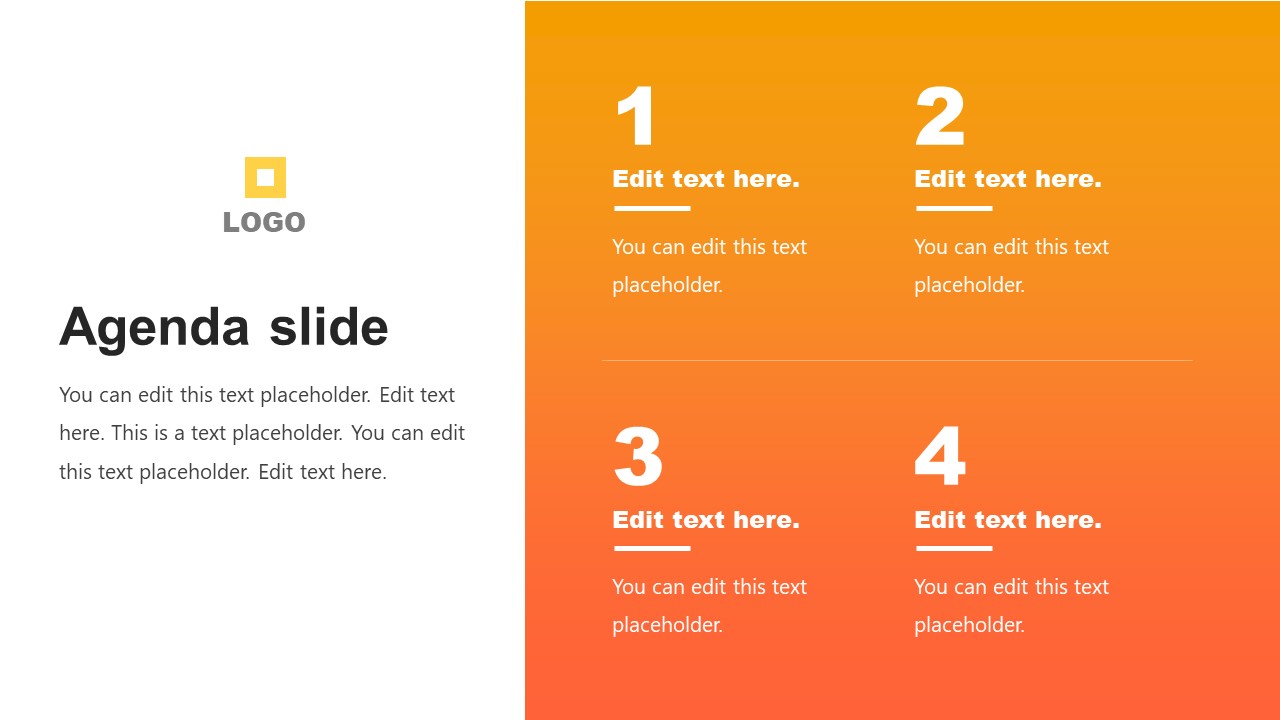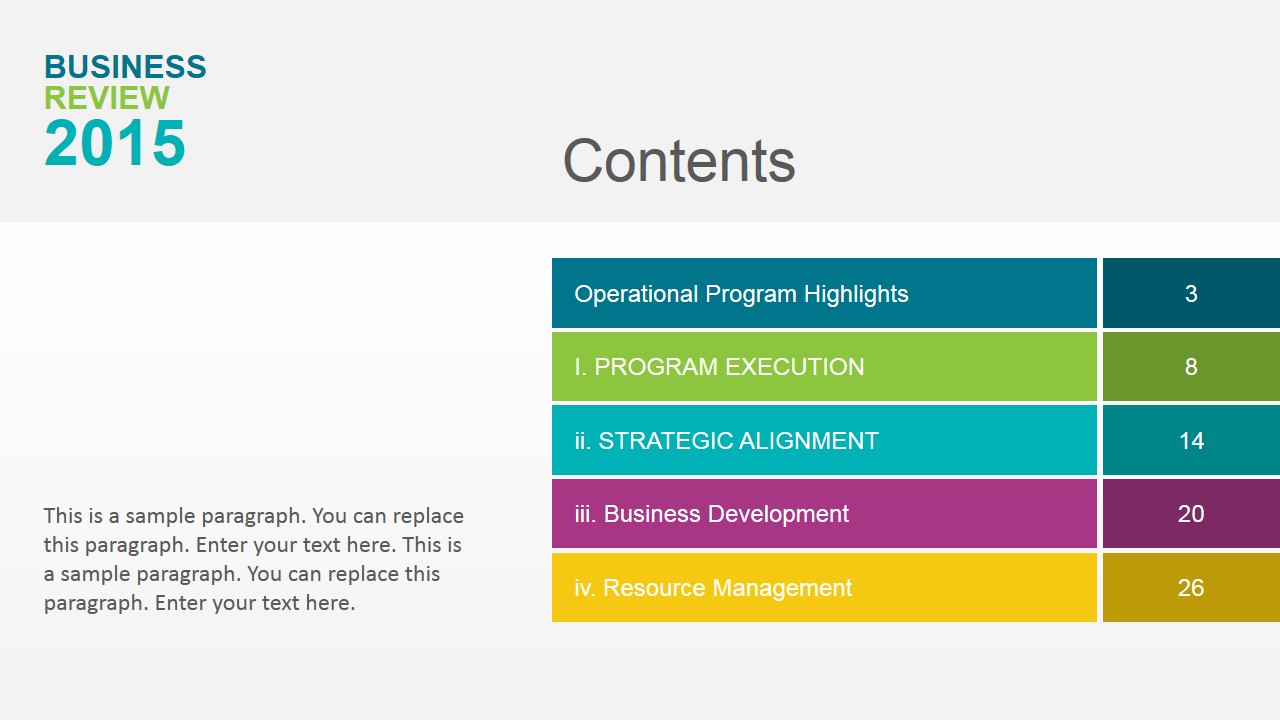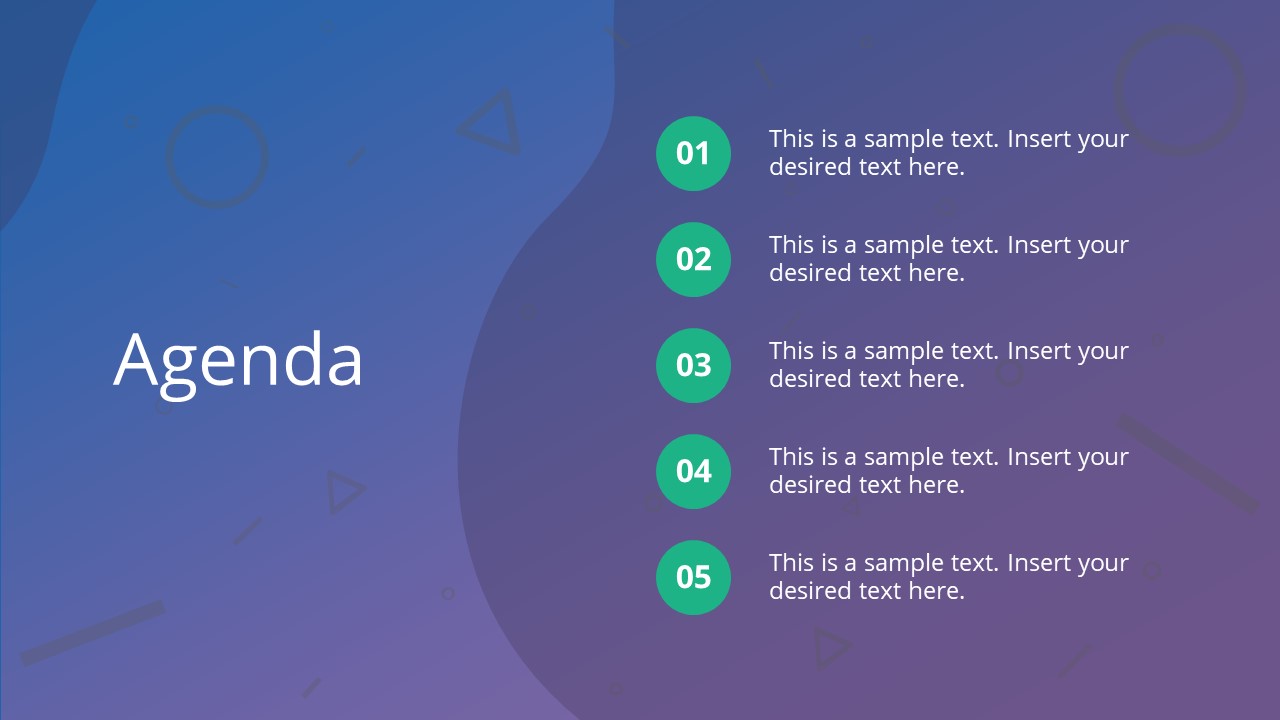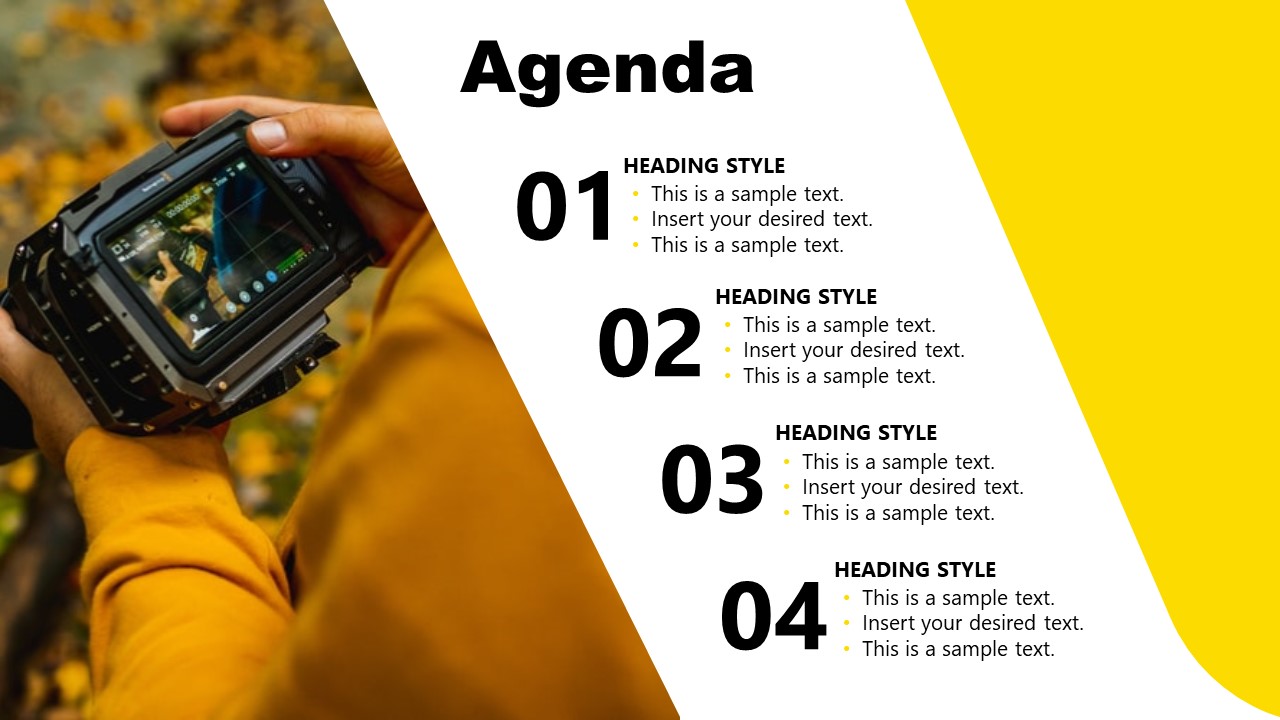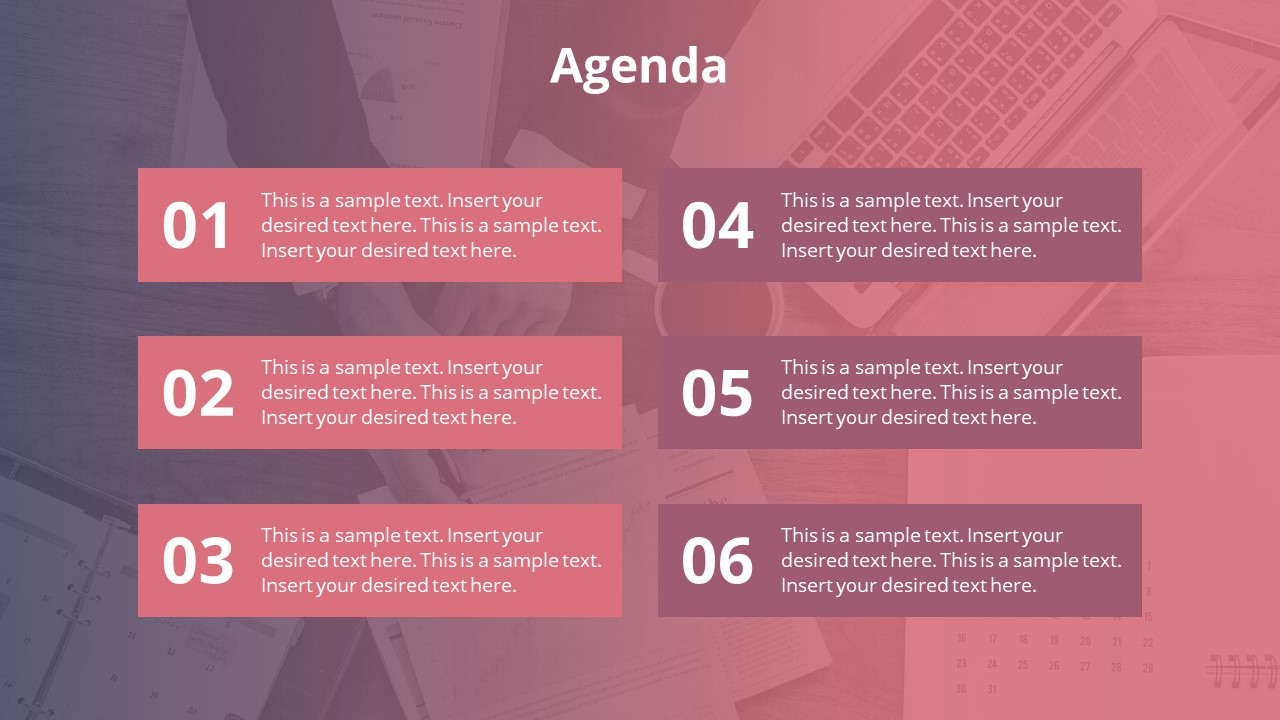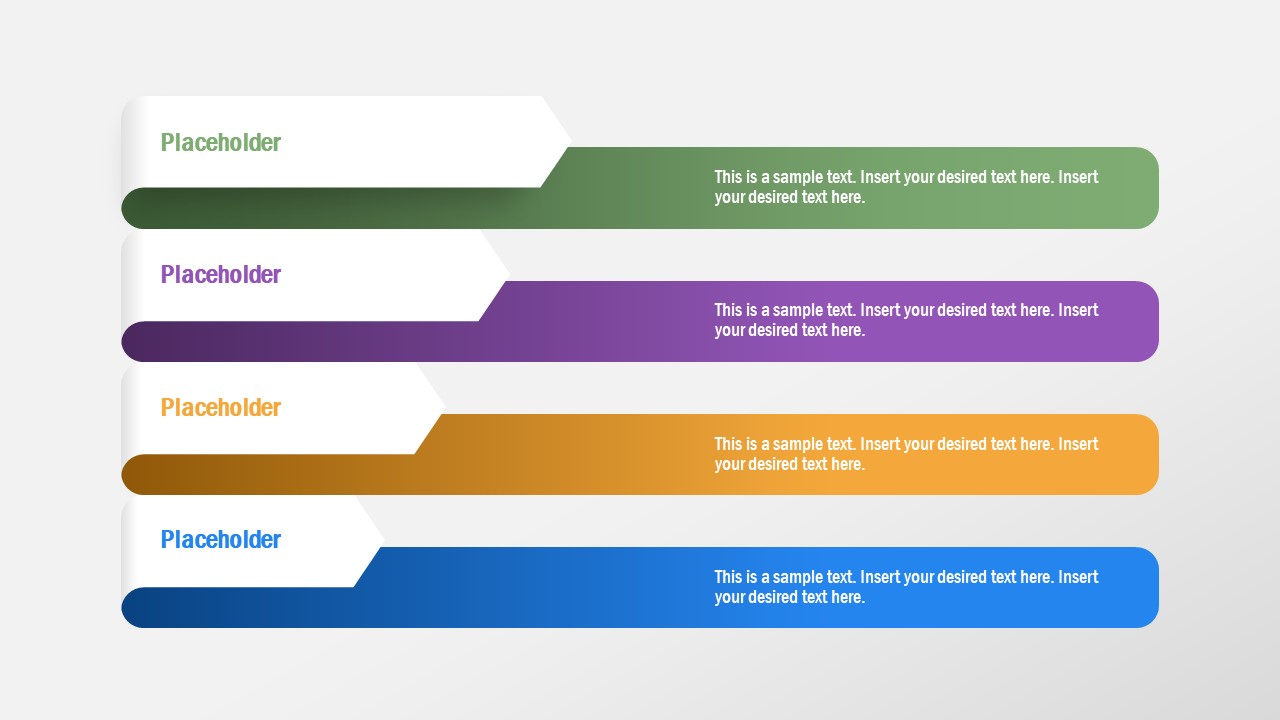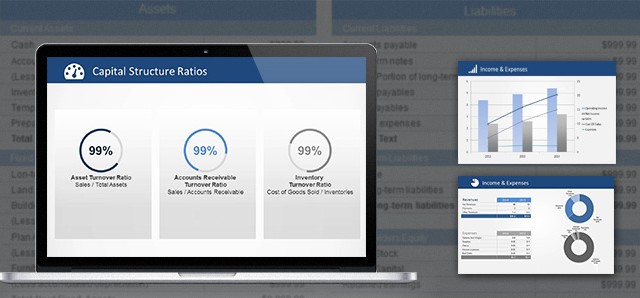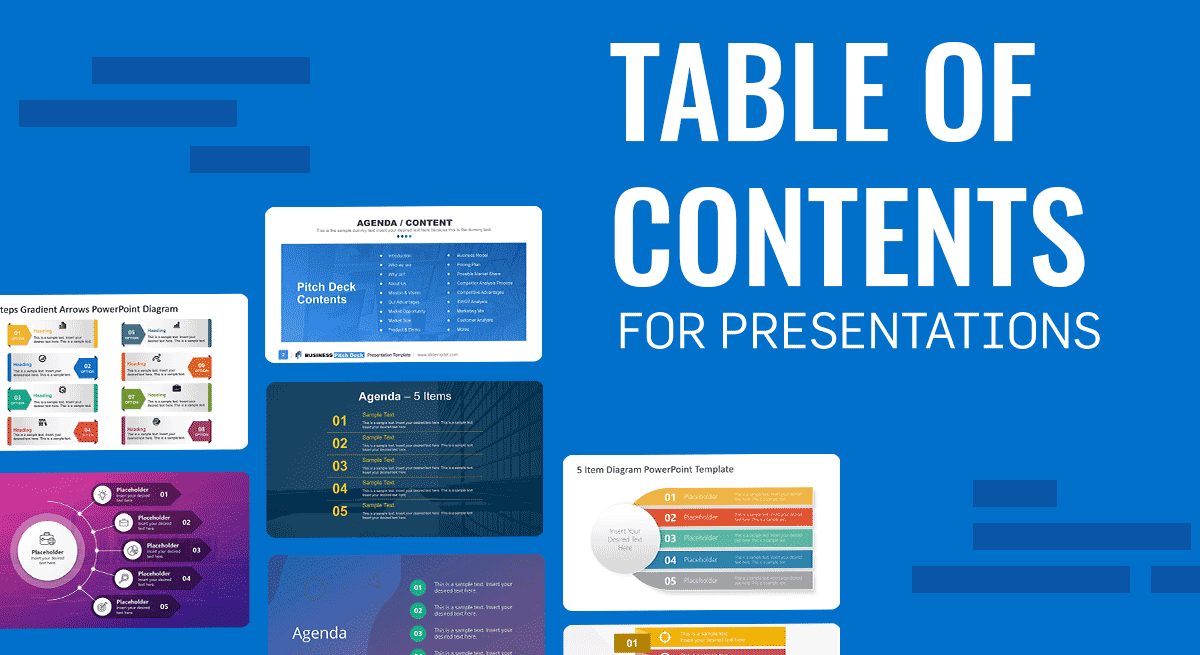
Table of Contents (TOC) are commonly used across various forms of writing. Microsoft Word is one of the most commonly used Word processors by authors, researchers, analysts, etc. It provides a built-in feature to help generate Table of Contents both automatically and manually. Many presenters might need a similar option to create a table of contents in PowerPoint to help them present and switch between topics with ease. In this article, we will show you the various methods for creating a Table of Contents in PowerPoint.
What is a Table of Contents in PowerPoint?
Table of Contents is also called TOC or Agenda Slide. This is a list usually found at the start of a piece of writing, with titles for chapters or sections, along with their respective page numbers. In PowerPoint, presenters sometimes use interactive Table of Contents to switch between slide objects using clickable TOC links. Other presenters might opt for an unlinked TOC to simply explain the contents of the presentation or piece of writing under discussion in the presentation (e.g. a research report or book). Even if you aren’t discussing a publication, you can use a Table of Contents to link your slides to make them easier to navigate and to present information regarding the outline of your presentation deck.
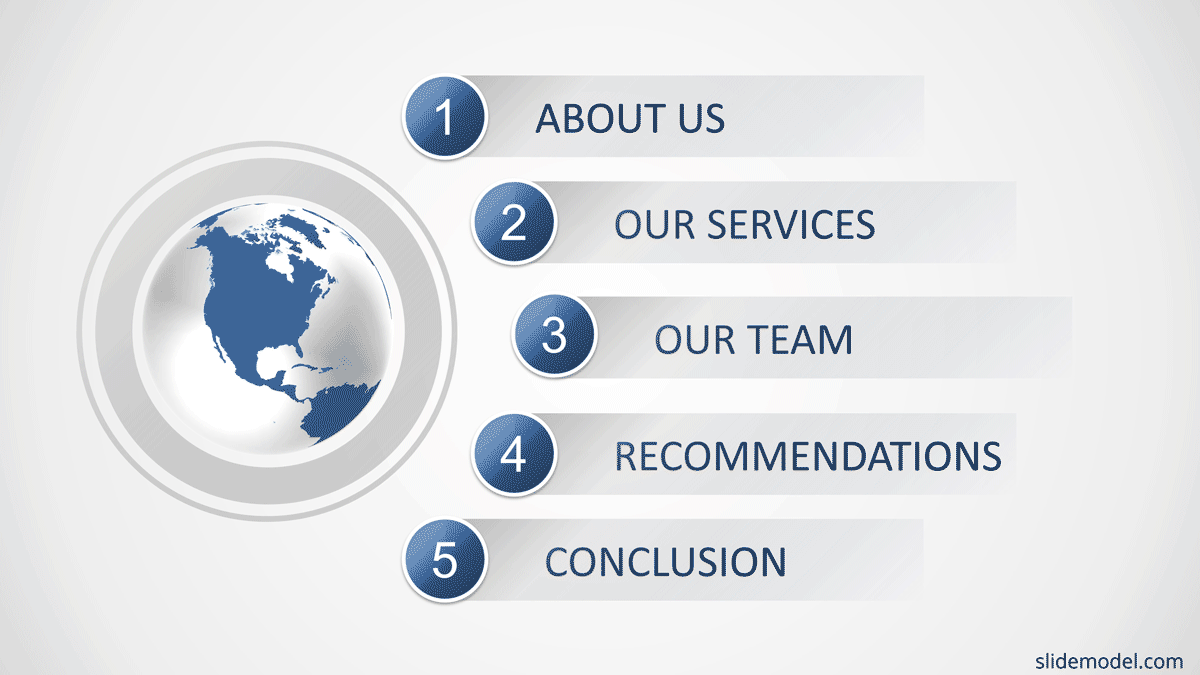
How do you Present a Table of Contents in a PowerPoint Presentation?
Needless to say, the table of contents will be presented at the start of a PowerPoint presentation. The most common use is right after the title slide or basic introduction of the topic. There are two main methods you can use to present a Table of Contents in PowerPoint. You can either use an automatic table of contents linked to respective slides or an unlinked TOC. This will help to organize your slides better in PowerPoint.
Unlinked Table of Contents in PowerPoint
An unlinked TOC can be used to briefly explain the PowerPoint table of contents to introduce the key parts of the presentation. In this case, the TOC can be used as an introduction or reference before moving on to the presentation topic.
Automatic/Interactive Table of Contents in PowerPoint
If you want to use an automatic table of contents, you can link respective slides to each part of the TOC. For example, clicking on chapter/section 1 in the TOC might lead to the relevant slide with more details regarding it. Similarly, when discussing the second chapter/section, you can return to the main slide, explain its relevance and click on it to switch to the respective slide with more information.
Interactive Table of Contents in PowerPoint can also enable the presenter to switch back and forth between topics using clickable links. This might be required when you need to go back and forth to explain related aspects of a topic. For example, slide 6 might have something relevant to slide 3, where you might need to go back and show previously discussed information for the purpose of further deliberation by the audience.
How Do You Create a Table of Contents in PowerPoint?
Now that we have discussed how Table of Contents can be used and presented in a PowerPoint presentation, let’s take a look at the various methods you can use to create them.
Automatically Generating a Table of Contents in PowerPoint
You can generate an automatic table of contents by linking various slides or even another document or webpage to your TOC. The most common methods for creating an automatic table of contents in PowerPoint includes linking various slides in the form of clickable links at the beginning of the presentation.
Automatic PowerPoint Table of Contents Example
In our automatic PowerPoint table of contents example, we have created a TOC right after the title slide. You can start with a blank page and give a title to your TOC. The most obvious title would be to simply call the slide ‘Table of Contents’.
Step 1
To create an automatic table of contents in PowerPoint, go to the Insert tab in the Ribbon menu and select Link -> Insert Link. This will provide you with the option to add a title and link.
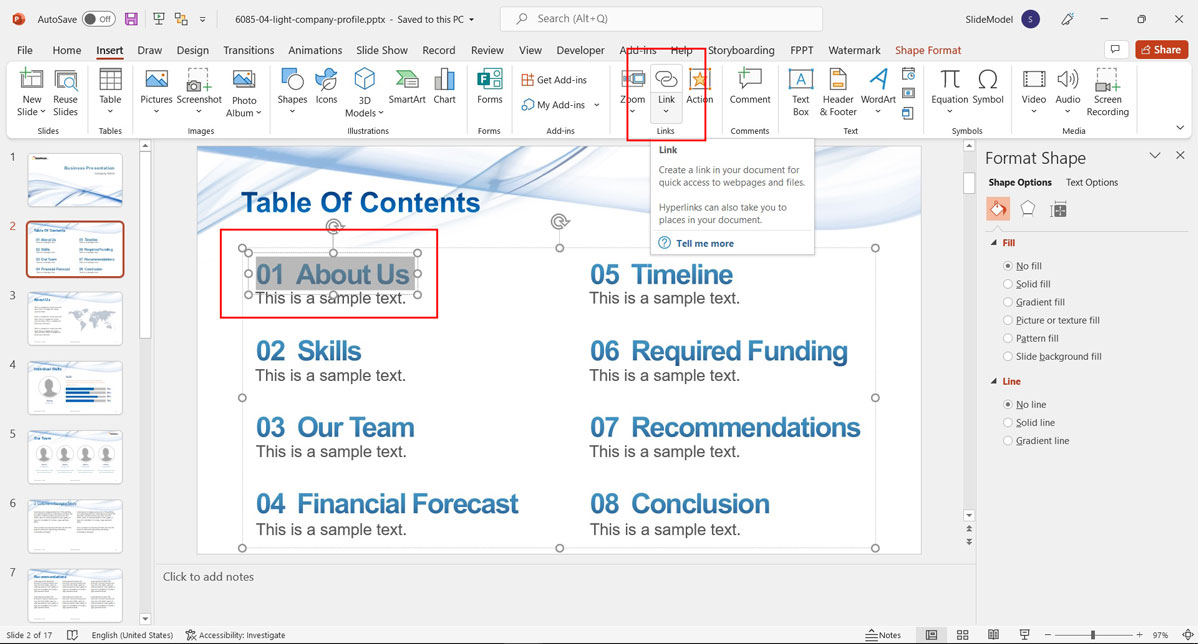
Step 2
To link to existing slides, head over to the ‘Place in the Document’ option to see the list of slides you intend to link to. Select the slide you want to add and click Ok. This will create a link to the slide in your list. Clicking on the link in Slide Show mode will lead automatically to the connected slide.

Step 3
Once you have linked all slides, switch to Slide Show mode in PowerPoint and preview your list. You can also click to see if the titles are properly linked. The linked content can also be stylized using options from the Ribbon menu.
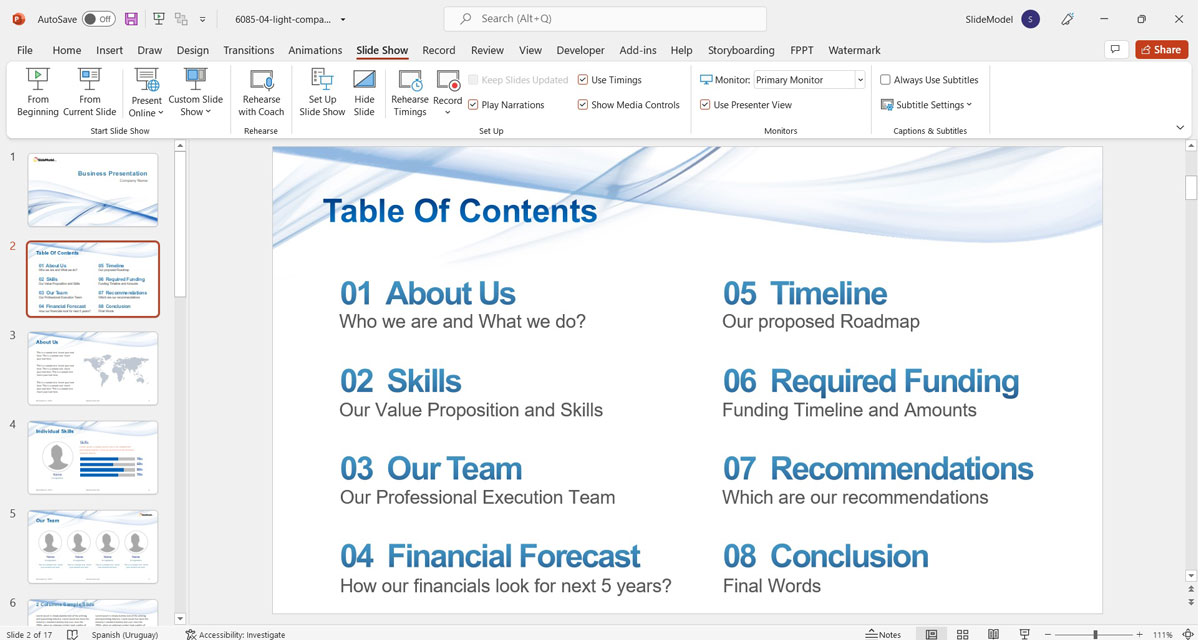
Using Outline View to Fetch Table of Contents
If you wish to quickly grab the outline of your slide deck to generate an the table of contents based on your slides titles, you can go to View -> Outline View and copy your table of contents. You might want to collapse the menu using the right-click context menu in order to easily copy the slide titles.
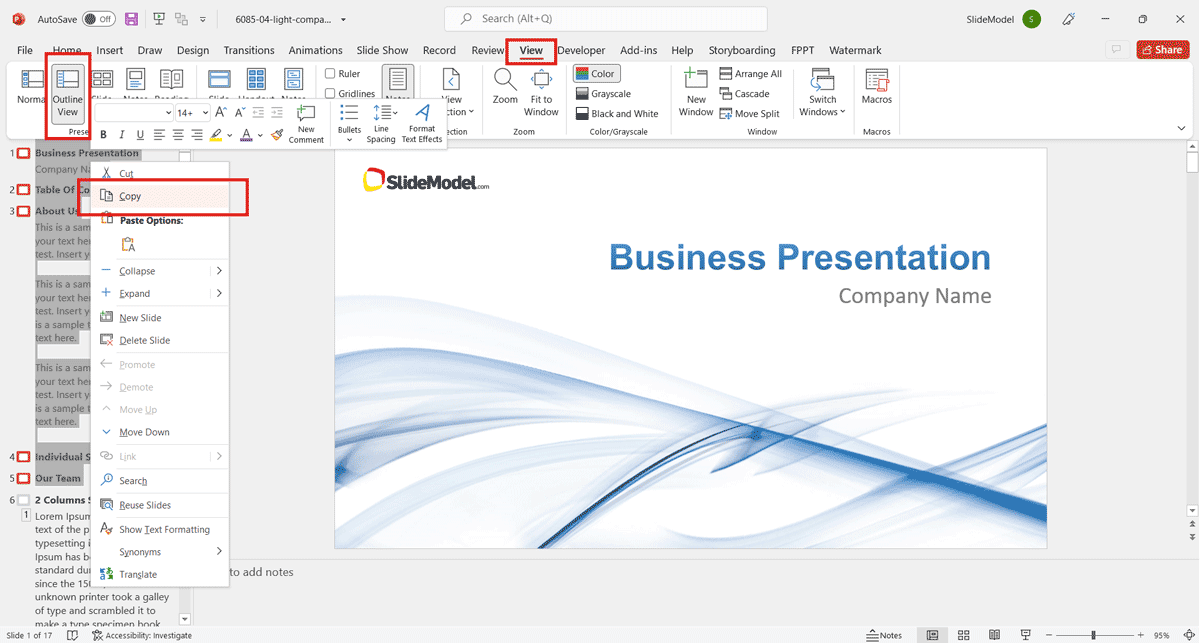
Paste the outline in PowerPoint, highlight each section and link to the respective slide via the Link option from the Ribbon menu in the Insert tab or via the Link option from right-click context menu.
Or just place the text in the placeholders of the table of contents design selected.
Create a Table of Contents using PowerPoint Zoom Feature
Since PowerPoint 2019, there is a new way of building a table of contents. You can create a landing page, which highlights each section, using a thumbnail of the slide. Also, check how to create sections in PowerPoint.
Step 1
In the Insert Ribbon menu, select the “Zoom” feature and click in the “Slide Zoom” option.
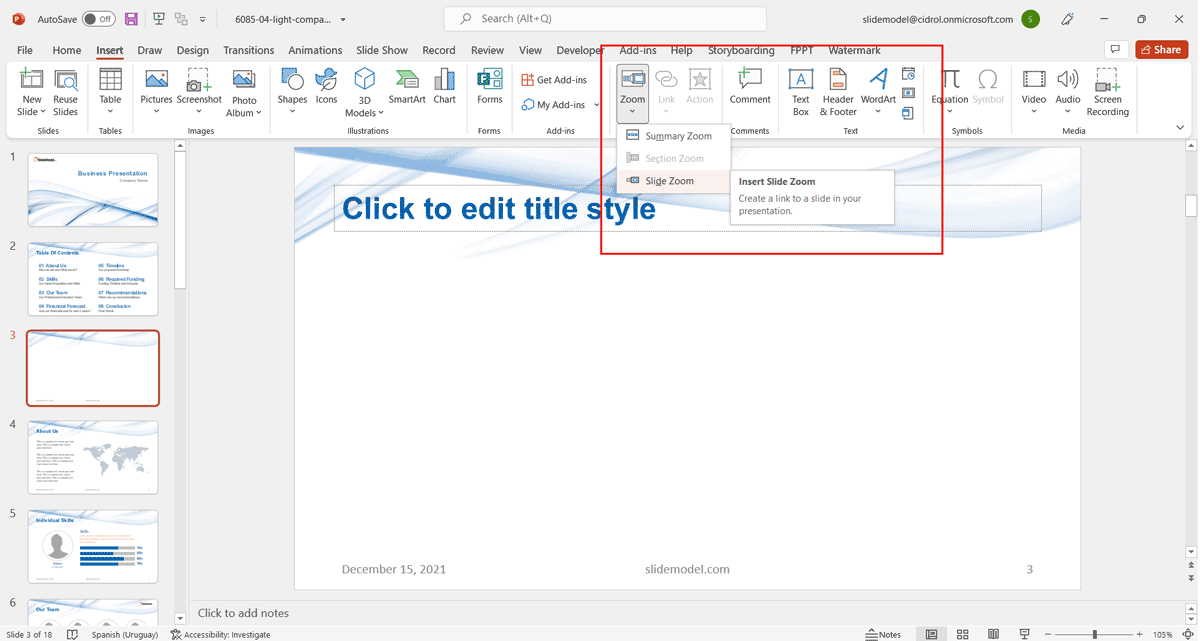
Step 2
A popup window will open with the slides of the presentation. Select the slides you want to add to the table of content.

Step 3
Insert the thumbnail, and arrange them according to the layout of your presentation. When you play the presentation, you will be able to navigate to the slide through the Zoom feature.

Creating a Link to Switch Back to Table of Contents Slide
To be able to switch back and forth between slides, it is recommended to create a link to be able to switch back to the table of contents from any of the linked slides.
You might be on slide 4 and now need to go back to your table of contents to show the list again and click on slide 9 to switch to it. In such a case, it will be convenient to have a link or button that switches back to the TOC slide.
You can create a table of contents link on required slides through the same method, by generating a link on each slide via Insert -> Link -> Insert Link. You can add this in a subtle way to your slides, such as at the bottom of each slide.
You can add the link to a PowerPoint Shape, or text field, depending on the design of your slide.

Manually Creating Table of Contents in PowerPoint
Manually creating a table of contents in PowerPoint is another method by which you can generate a list of your slides. This does not require linking to the outline.
Manual Table of Contents Example
You can either go to View -> Outline View and copy your table of contents or type each slide title to create a manual table of contents.
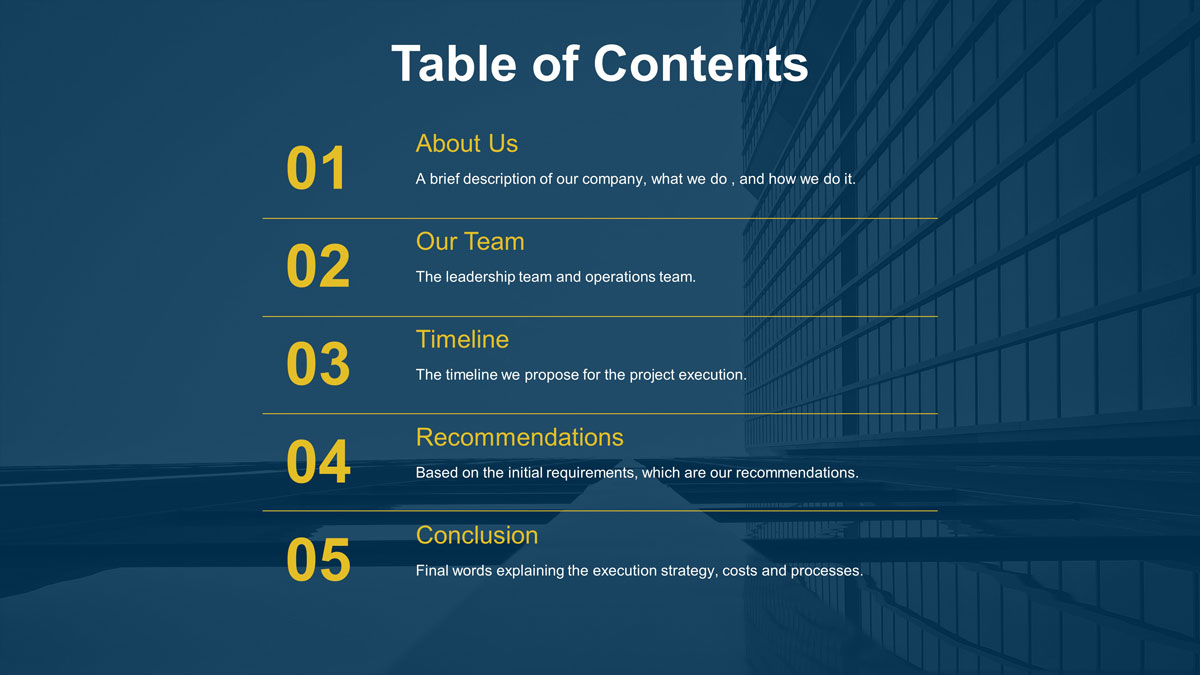
How to Customize a Table of Contents PowerPoint Slide?
Once you have a manually created or linked table of contents in PowerPoint, you can also customize it.
Ribbon Menu Options
To customize the table of contents you can use text and shape styles in PowerPoint via the Ribbon menu. You can also highlight key parts of your content and use the Tab key or bulleted lists to list subtopics underneath main topics or chapters.
Readymade PowerPoint Templates
You can use readymade templates to create a table of contents that appears stylish and eye-catching. Using a readymade PowerPoint template can save you time in stylizing your content. Look our suggestions at the list at the end of the article.
Final Words
Using a table of contents for your PowerPoint slides can be a great way to introduce the key parts of your presentation. While using TOC can be necessary when discussing a publication, you can even use it to make your presentation easy to understand and to organize the content for each section, topic, and subtopic. Using a PowerPoint Table of Contents template can also be a good way to visualize the different parts of your presentation to make it easier for your audience to follow your topic.
In case you are using an automatic table of contents, linked to respective slides, they can be an easy way to switch between various topics and subtopics without the need to manually sift through slides.
